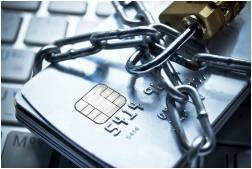Sorting Thru the EMV Chip Card Confusion
 Credit unions are all too aware that there is a consumer revolution in how credit cards are used at point-of-sale (POS) terminals. Over the 2015 holiday shopping season, consumers armed with new EMV chip cards faced a situation at checkout that was often confusing. Most terminals didn’t accept chip cards and still required the cardholder to swipe. Other checkout systems had a slot for chip cards and a swipe mechanism, but it was up to the clerk to point out which to use. The terminal may have had the ability to insert an EMV card, but was not yet enabled to accept the EMV payment. Other POS machines still allowed for the swipe, but beeped loudly at consumers who had chip cards to use the slot instead. The result was confused consumers, confused clerks, and an overall sense of annoyance (not to mention increased transaction time).
Credit unions are all too aware that there is a consumer revolution in how credit cards are used at point-of-sale (POS) terminals. Over the 2015 holiday shopping season, consumers armed with new EMV chip cards faced a situation at checkout that was often confusing. Most terminals didn’t accept chip cards and still required the cardholder to swipe. Other checkout systems had a slot for chip cards and a swipe mechanism, but it was up to the clerk to point out which to use. The terminal may have had the ability to insert an EMV card, but was not yet enabled to accept the EMV payment. Other POS machines still allowed for the swipe, but beeped loudly at consumers who had chip cards to use the slot instead. The result was confused consumers, confused clerks, and an overall sense of annoyance (not to mention increased transaction time).
In our December blog article, "Who Really Pays When it Comes to EMV," we noted that 36% of credit unions don’t anticipate full EMV functionality until at least the end of 2016. Further, 60% of CUs will rely on a rolling reissue as magnetic stripe cards expire, and another 27% elect for a complete, simultaneous reissue. Credit unions understand the importance of EMV from a security standpoint, and are committed to the technology, no matter how they plan to roll it out. From the terminal side, merchants want to avoid taking responsibility for chargebacks (how nice for them), and are also committed to EMV - some slower than others, but still on board. It is your members who have the least amount of knowledge and understanding as to why EMV is important, but with a little education, can be shown they stand the most to gain from EMV... Security!
The security that EMV provides is proven in other markets as a huge benefit that protects all parties involved, especially the consumer. In addition to the US, China is also playing catch up to Europe and Canada, who started using EMV over a decade ago. And the past decade has shown us that the EMV push is a good thing for reducing credit card fraud and improving security. In nations that have adopted EMV, credit card fraud for Card Present Transactions has decreased dramatically. The United Kingdom, for example, saw a 32.5 percent reduction from 2004 to 2011 after the introduction of the chip-based cards.
But the reality is that EMV is only one part of the security puzzle. Credit Unions should work with their members to realize the bigger picture of card security. The fact that consumers have no doubt witnessed EMV as they shop, sometimes with confusion, is a great opportunity for credit unions to educate. In some ways, the adoption of EMV is much like the mobile wallet movement. It may be confusing to members who have grown accustomed to one way of conducting transactions, but credit unions can turn this into an advantage by providing education using their close and trusted relationship with members.
CUs should consider implementing even more security features, such as remote controls for cards, that empower members to have greater control over their credit card security, as well as approach EMV with the priority it warrants. Offering enhanced security features in card management should be done with ease, as your core system should allow for seamless integration with your card products, creating efficiencies for both staff and members. Credit union staff should be able to view transaction information from within the core system to provide increased member service for items such as pre-authorizations and card holds.
Your members should have access to card information through mobile and Internet banking. Access to card controls for credit union and member security should not be an afterthought as fraud continues to grow. If you understand and educate your members on the payment card industry, and offer robust and advanced card management technology through your core, it's an opportunity to promote more services to your target audience, and do so efficiently.



